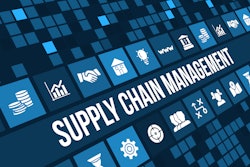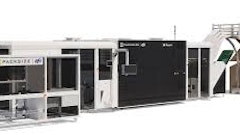
Small and mid-sized businesses (SMBs) are often described as the backbone of the global economy, yet they’re bearing the brunt of supply chain instability. While headlines have largely moved on from pandemic-era disruptions and tariff uncertainty, the pain points from both still persist and the year so far has been full of surprises. Only now, they’re paired with an added pressure: rising procurement costs and mounting competition for speed, convenience, and customer experience in the marketplace.
From January-February of this year, average procurement costs from nearshore partners like Mexico and Canada increased by roughly 20%. By March, those same categories surged over 50%. Compared to this time last year, SMBs are now paying nearly 30% more per unit across essential inputs despite keeping order volumes consistent. This silent squeeze is forcing SMB operators to rethink not just how they sell online, but how efficiently they run their operations.
The e-commerce boom hasn’t technically slowed, but it is evolving. While platforms like Shopify have made it easier than ever to launch digital storefronts, the main challenges for product-based businesses lie behind the scenes. SMBs need to focus on matching inventory to demand, forecasting procurement cycles, and orchestrating fulfillment in an increasingly complex and uncertain global supply chain. In fact, a 2025 study from Deloitte found that digitally mature SMBs are three times more likely to report revenue growth of 10% or more compared to their less tech-enabled peers
Success is strongly tied to operational intelligence
SMBs don’t need more dashboards. What they really need are better decision-making tools. The opportunity in e-commerce tech isn’t about flashier storefronts or next-day shipping promises. It’s about empowering small business owners to make faster, smarter decisions with the limited time and resources they have as there are types of companies out there that are under pressure and more strapped for resources.
That involves integrating real-time data across procurement, production, and fulfillment into one cohesive process. It also means using software to flag when components’ lead times are stretching too long or when demand is spiking based on seasonality or a viral trend. And it also means automating repetitive workflows, so business owners aren’t stuck copying spreadsheets while customer orders pile up. Business owners need to be ready, and e-commerce tech is the answer.
Why the supply chain is now a front-end problem
Traditionally, the supply chain sat behind the curtain. But today’s e-commerce customers have zero tolerance for stockouts, backorders, or shipping delays. This shift has made supply chain agility a customer-facing concern and one that SMBs can’t afford to overlook.
Consider the small manufacturer selling made-to-order home goods online. A delay in sourcing a specific fabric or hardware component can now result in lost revenue, damaged customer trust, and negative reviews. What was once a back-office issue now has front-and-center impact. Without technology that provides visibility and control over every link in the chain, these SMBs are left vulnerable.
Tech alone isn’t the answer (it’s about how it’s built)
It’s tempting to think of “more tech” as the solution. But the truth is that many SMBs are drowning in disconnected tools. What they need is simplicity: systems that are purpose-built for businesses managing physical products, not clunky enterprise software repackaged for the mid-market.
This is where modular, intuitive software can make a real difference. The right tools aren’t just designed for scale—they’re designed for daily use. They enable SMBs to match “make to order” and “make to stock” workflows, sync with e-commerce platforms and streamline procurement—all without requiring a dedicated IT team.
From surviving to scaling
What we’re witnessing is a tipping point. SMBs are no longer just looking to survive post-pandemic and the tariff uncertainty; they’re trying to scale smarter. The ones that will succeed in today’s e-commerce environment are those who treat their supply chain as a growth driver, not just a cost center.
That means adopting tech that prioritizes visibility, speed, and flexibility. It means investing in systems that can adapt as supply costs change or demand shifts. And it means recognizing that in a world of thin margins, operational intelligence is the new competitive advantage.
For too long, supply chain resilience has been viewed as a luxury reserved for large enterprises. But as procurement costs climb and customer expectations rise, SMBs can’t afford to sit on the sidelines. With the right technology approach, they won’t just keep up - they’ll lead.















![Pros To Know 2026 [color]](https://img.sdcexec.com/mindful/acbm/workspaces/default/uploads/2025/08/prostoknow-2026-color.mduFvhpgMk.png?ar=16%3A9&auto=format%2Ccompress&bg=fff&fill-color=fff&fit=fill&h=135&q=70&w=240)


